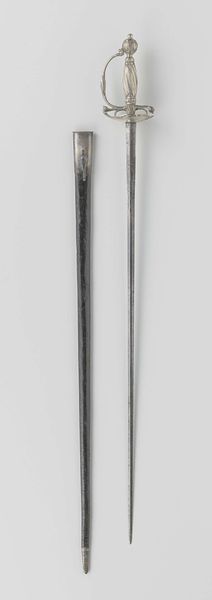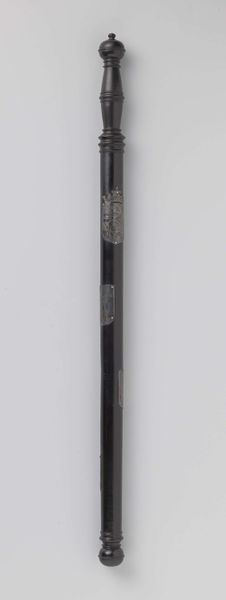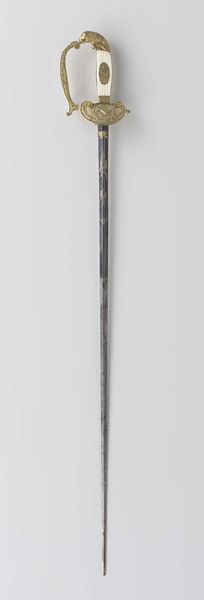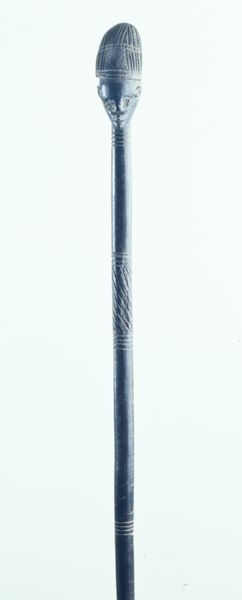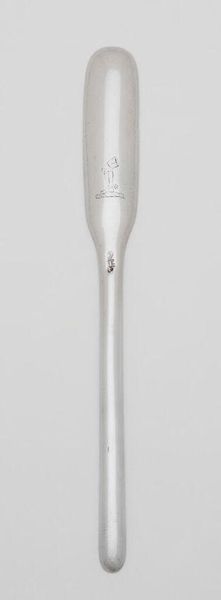
glass
#
baroque
#
glass
#
decorative-art
Dimensions: height 38.6 cm, diameter 5.7 cm, diameter 10.4 cm
Copyright: Rijks Museum: Open Domain
Curator: This elegant object is a flute glass, crafted by an anonymous artisan sometime between 1675 and 1700. Currently residing here at the Rijksmuseum, it's a remarkable example of Baroque decorative art rendered in delicate glass. Editor: It's surprisingly austere for Baroque. That elongated stem and the fine engraving give it a certain reserved dignity. There's something almost ecclesiastical about its shape, wouldn’t you say? Curator: I see your point. Though adorned, the symmetry and clear glass evoke purity, which connects it to ritual and, more broadly, a striving toward transcendence—common in art made in periods marked by upheaval. Think of it holding communion wine or simply being raised in a toast during a solemn occasion. Editor: That coat of arms near the top is quite detailed. It’s an important clue to its origins. Curator: Exactly. These heraldic symbols communicate identity and lineage, serving as emblems of power and social standing. Consider the ripple effect; such a vessel embodies the self-presentation of a noble family, also becoming a subtle propagandistic tool aimed at shaping public perceptions and reinforcing their authority. Editor: These objects also give the past such palpable form; they become touchstones that reflect changes in social rituals surrounding drinking, celebration, even mourning, tracing cultural evolution itself. Curator: Indeed, they’re far from inanimate. Beyond the mere functional and ornamental value, an artifact like this one becomes an active transmitter of memory and values across generations. Editor: Looking at the engraving again, it's delicate to a degree that seems to defy the material. And I keep thinking about how such objects shaped the social lives that are only distant stories to us. Curator: And to think this flute glass, surviving intact across centuries, invites us to keep their stories alive and raise our own glasses, perhaps in quieter appreciation.


